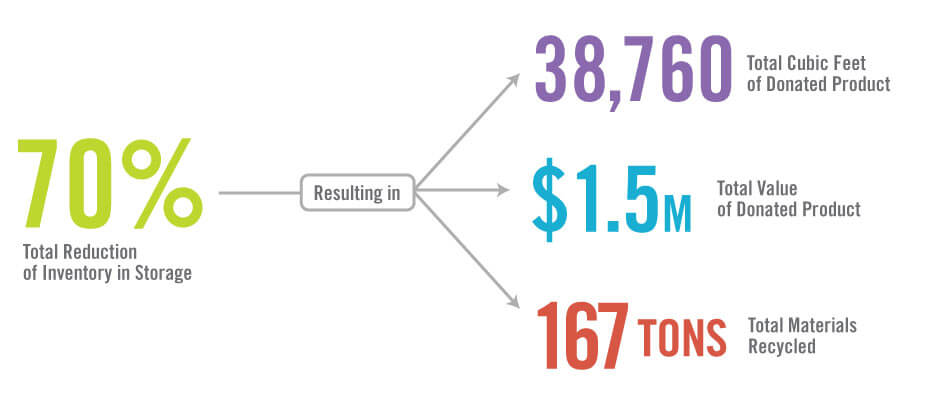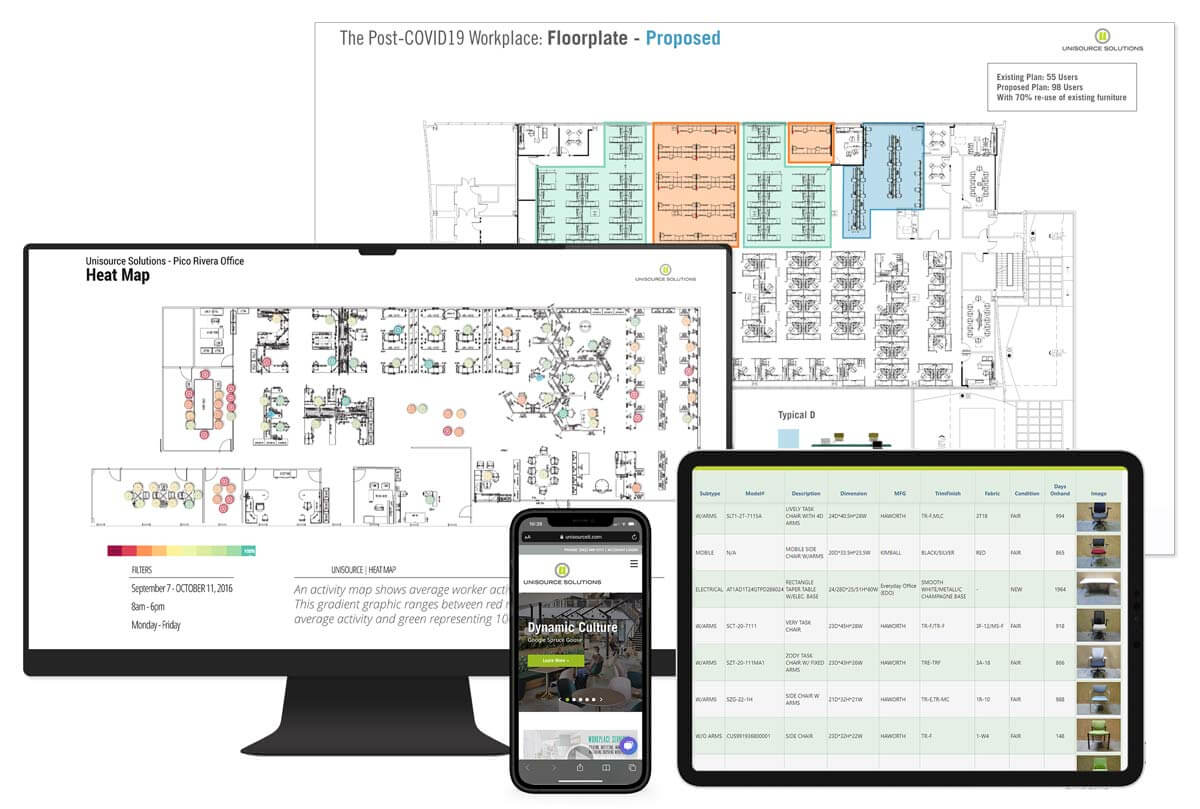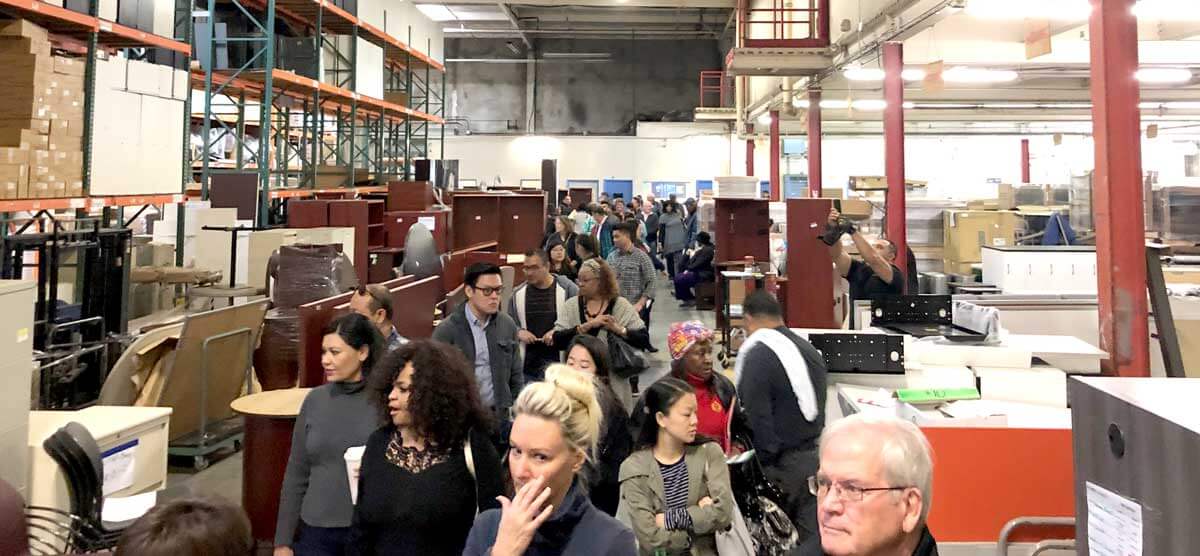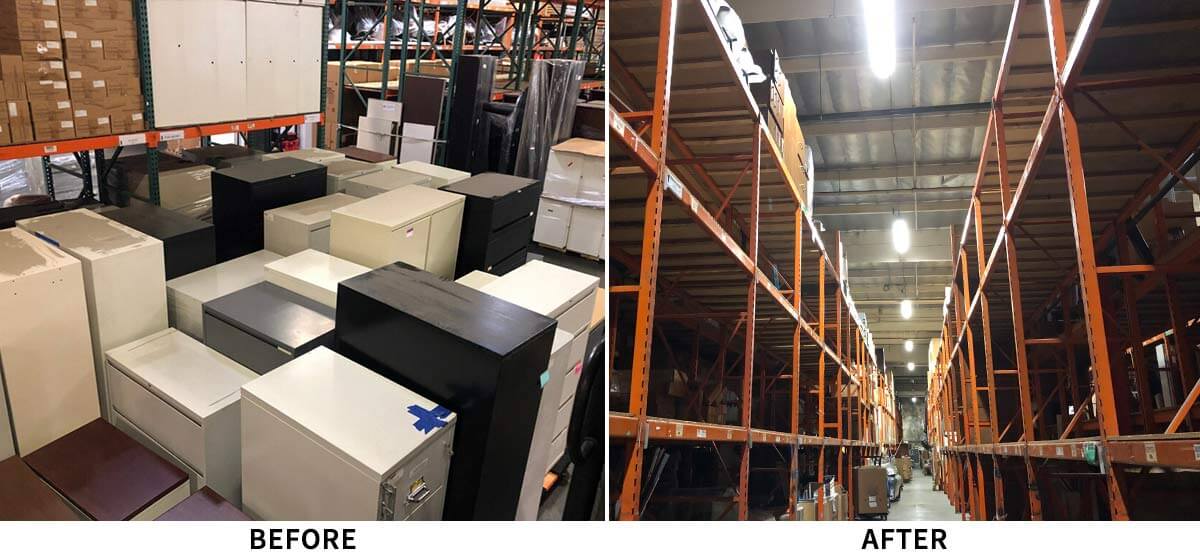Union Bank
Multiple Locations, California and New York

Decommission with Social Conscious
At the beginning of 2021, Union Bank came to us with a need to decommission multiple locations throughout California and New York. They maintained 84,122 cubic feet of assets in storage at our 120,000 sf warehouse in Pico Rivera, CA. With a need to eliminate 70% of their storage space, we worked together to yield huge savings to their bottom line and support the community around them.
Union Bank had a need, like many others, to consolidate a sprawling array of space. This included the company’s entire Los Angeles headquarters – eight floors in total – San Diego, New York, and Santa Barbara.
Together we tackled:
- 15 floors of space
- Across 8 locations
- Rounding up 7 separate buildings
Unisource Solutions was tasked with redesigning and reconfiguring existing furniture to consolidate Union Bank’s remaining locations; a process that would help them to better fit the changing market and create a more efficient portfolio. We worked to create a more standardized furniture aesthetic by removing parts of the older furniture lines, introducing a new furniture manufacturer, and organizing decommission efforts across each building and department. Through this we streamlined standardization, synced the Haworth furniture, and successfully pulled and decommissioned 70% of the inventory stored in our warehouse.

Standardizing Furniture Program
Using the hefty amount of furniture displaced by the decommission, the Unisource Solutions team considered furniture applications for Union Bank’s new building.
We built a standardization playbook, which would ultimately help to keep each separate workplace looking streamlined. The team incorporated new Haworth furniture and workstations into the mix of existing product. As much as possible, we reused and reconfigured existing furniture in the new spaces, which meant removing the furniture from storage and reinstalling it as needed.
Charitable Donation
With so many assets being disposed of, Union Bank asked that Unisource Solutions manage a mass donation of the excess furniture from their sites to local non-profit organizations that are part of the Union Bank umbrella.

We often provide decommissioning services to our clients, but with an engagement of this size and in a pandemic, we carefully took on our challenge. We began by sending private notice of the event to a few non-profits, and then promoted via social media. Given the quality and quantity of assets available, the social media promotion was quickly noticed and resulted in over 200 organizations calling to visit our warehouse; hoping to participate in the donation.

Bumble Bee Foundation, Business Resource Group, West Hollywood Community Housing Corp., 1736 Family Crisis Center, Boys and Girls Club of Santa Monica, Mount St Mary University, Feeding America of Riverside, YMCA of San Pedro, A Community of Friends, Women in Non Traditional Employment Roles, SFVHBT, St Annes, Thai CDC, Urban Corps of SD County, The Living Desert, Los Angeles Brotherhood Crusade, Ephesians New Testament Church, Life Community Development, Family Hope, House of Yahwen, New Direction for Veterans, YMCA of Metropolitan Los Angeles, Los Angeles Conservation Corps
We worked overtime in delegating calls and organizing the crowd in our office lobby. The Union Bank team, Amira Marouf and Joe Trainer, took participants through the warehouse in groups of 20. They made sure to limit how much product each organization could take, so that we would have enough for each charity to benefit substantially. In instances where a particular organization needed a bit more, our warehouse manager, Jorge Arellano, worked with other clients of ours to participate and donate needed parts. We passed out stickers and pens so that people could tag and reserve the furniture they wanted, then we made a list of “wants” for organizations that did not get enough furniture so that Union Bank could work to delegate furniture to them from future decommissions.

The Results
This massive decommissioning work not only benefit the community and Union Bank but was hugely gratifying to the Unisource Solutions team. The team loved being a part of a significant effort to give back locally and support sustainable practices for our clients.
Ultimately, Unisource Solutions donated furniture to 50 charities across California. Each organization was a part of our warehouse visit and chose their furniture. We reduced Union Bank’s storage inventory by 70%, and we did so by following the standards they preferred.
While Unisource Solutions warehouse project to reduce Union Bank’s space is done, we are still decommissioning other spaces for the company. Our goal is to continue maintaining Union Bank’s design standards and avoid the addition of a large inventory – all while reusing what they do have to minimize the financial cost of buying and environmental cost of manufacturing more product for their spaces.

